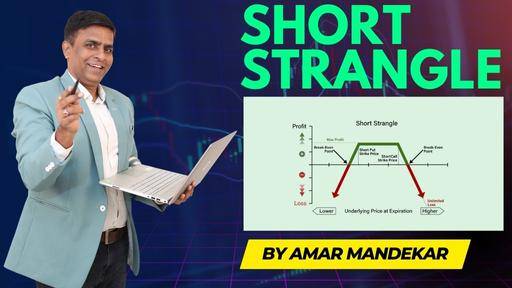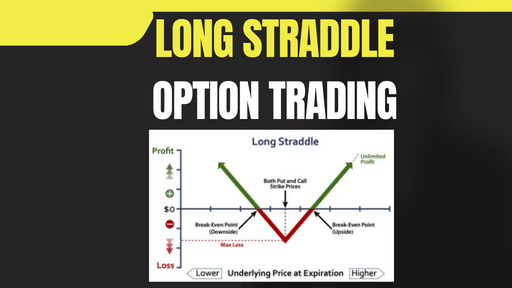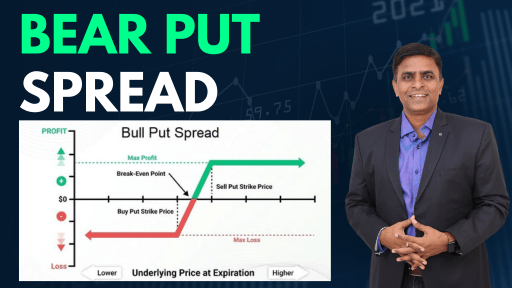Table of Contents
Introduction:
Are you intrigued by the world of investing but find the stock market intimidating? Fear not! Option trading provides an excellent opportunity for beginners to enter the market and potentially reap significant rewards. Whether you’re aiming to supplement your income or build long-term wealth, understanding the fundamentals of option trading is essential.
In this guide, we will take you on a journey through the exciting journey of option trading. We’ll cover the basics, explore various strategies, highlight the risks involved, and offer valuable tips to help you make informed investment decisions. So, buckle up and get ready to unlock the secrets to profitable investing!
I. The Basics of Option Trading
Before diving into option trading, let’s start with the fundamentals. Options are financial instruments that provide traders with the right (but not the obligation) to buy or sell an underlying asset at a predetermined price within a specified timeframe. This flexibility makes options an attractive choice for investors looking to leverage their capital and potentially generate substantial profits.
1. Call and Put Options
- A call option gives the holder the right to buy the underlying asset at a predetermined price (known as the strike price) before the expiration date .This is a preferred strategy for traders who bullish for that particular stock or index. Call Option denoted by CE.
- Conversely, a put option grants the holder the right to sell the underlying asset at the strike price before expiration. This is a preferred strategy for traders who bearish for that particular stock or index. Put Option denoted by PE.

2. Option Premium and Expiration
- Option contracts have an associated cost, known as the premium, which buyers pay to obtain the rights associated with the option.
- Each option has an expiration date, beyond which the contract becomes invalid.

3. Intrinsic Value and Time Value
- The intrinsic value of an option represents its immediate worth if exercised, calculated as the difference between the current market price of the underlying asset and the option’s strike price.
- Time value is the additional value attached to an option, taking into account factors such as volatility, time until expiration, and interest rates.

II. Strategies for Successful Option Trading
Now that we have a solid understanding of the basics, let’s explore some popular option trading strategies. These strategies can help you navigate the market with purpose and increase your chances of profitable outcomes.
1. Covered Call Strategy
- This strategy involves selling a call option on an underlying asset you already own.
- It allows you to generate income from the premium while potentially limiting your upside potential if the asset’s price rises above the strike price.

2. Protective Put Strategy
- The protective put strategy involves purchasing a put option to protect an underlying asset from potential downside risk.
- This strategy acts as an insurance policy, allowing you to sell the asset at the strike price even if its market value plummets.
3. Long Straddle Strategy
- The long straddle strategy involves buying both a call option and a put option with the same strike price and expiration date.
- It is employed when you anticipate a significant price movement in the underlying asset but are uncertain about the direction.

4. Bull Call Spread Strategy
- This strategy involves buying a call option with a lower strike price and simultaneously selling a call option with a higher strike price.
- The goal is to profit from a moderate increase in the underlying asset’s price while limiting potential losses.

5. Bear Put Spread Strategy
- The bear put spread strategy is the opposite of the bull call spread strategy.
- It involves buying a put option with a higher strike price and selling a put option with a lower strike price, aiming to profit from a decline in the underlying asset’s price.
III. Risks and Risk Management
Option trading, like any investment activity, carries inherent risks. It’s essential to be aware of these risks and implement proper risk management strategies to protect your capital and minimize potential losses.
1. Time Decay and Expiration Risk
- As options have expiration dates, their value erodes over time. This phenomenon is known as time decay.
- If the underlying asset’s price fails to move in the desired direction before expiration, the option may expire worthless, resulting in a complete loss of the premium paid.
2. Volatility Risk
- Options are influenced by market volatility. Increased volatility can lead to wider price swings, potentially affecting the value of options.
- Traders must consider the potential impact of volatility when selecting options and adjusting their strategies accordingly.
3. Leverage and Loss Amplification
- Options provide traders with leverage, allowing them to control a larger position with a smaller investment.
- However, leverage can amplify losses as well. It’s crucial to use leverage wisely and avoid taking on excessive risk.
4. Counterparty Risk
- Options are traded through brokers and exchanges, introducing counterparty risk.
- It’s important to choose reputable brokers and ensure they are regulated to mitigate the risk of counterparty default.
By understanding these risks and employing appropriate risk management techniques such as position sizing, stop-loss orders, and diversification, you can protect yourself from potential pitfalls and enhance your chances of long-term success.
IV. Tips for Success in Option Trading
To set yourself up for success in option trading, consider the following tips:
1. Educate Yourself:
Take advantage of educational resources, attend webinars, read books, and follow reputable financial websites to continuously expand your knowledge.
2. Start Small:
Begin with a virtual trading account or allocate a small portion of your capital to real option trading. Gradually increase your position sizes as you gain experience and confidence.
3. Develop a Trading Plan:
Create a well-defined trading plan that outlines your goals, risk tolerance, preferred strategies, and exit criteria. Stick to your plan and avoid impulsive decisions.
4. Stay Informed:
Stay updated with market news, economic indicators, and company-specific events that could impact the underlying assets you’re trading.
5. Learn from Mistakes:
Embrace failures as valuable learning opportunities. Analyze your trades, identify areas for improvement, and refine your strategies accordingly.
Conclusion:
In conclusion, option trading presents an exciting avenue for beginners to enter the stock market and potentially achieve significant financial gains. By understanding the basics, employing effective strategies, managing risks, and continuously learning, you can unlock the secrets to profitable investing. Remember, option trading is a skill that takes time and practice to master. Start your journey today and secure your financial future!
FAQ:
Q: What do you mean by call option?
A: call option is a contract between a buyer and a seller to purchase a certain stock at a certain price up until a defined expiration date.
Q: Why Would You Buy a Call Option?
A: Investors will consider buying call options if they are BULLISH.
Q: What is the difference between a call option and a put option?
A: Call Option means Bullish and Put Option means Bearish scenario.
Q: How do you determine the strike price for a call option?
A: Ultimately, the choice of strike price will depend on the investor’s individual goals and risk tolerance. It is important to carefully consider all relevant factors and consult with a financial advisor before making any investment decisions.
Q: What is the maximum profit that can be made from a call option?
A: The maximum profit that can be made from a call option is theoretically unlimited.











